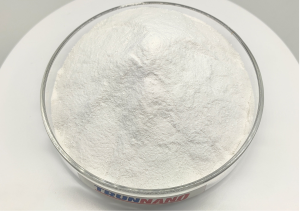1. Lubrication
The hydrophilic group in the superplasticizer has solid polarity, so the adsorption film of the water-reducing representative externally of the concrete particles can form a stable solvated water film with water molecules. This water film has good lubrication effect and can effectively decrease the sliding resistance between concrete bits, therefore more boosting the fluidness of concrete.
2. Dispersion
After concrete is combined with water, due to the hydration of the cement fragments, the concrete particles display a dual electrical layer structure, therefore forming a solvated water film. The surface of the cement bits has anisotropic fees, which leads to the formation of anisotropic charges in between the cement fragments organization. The slurry forms a flocculation structure, to ensure that cement fragments cover 10% to 30% of the mixing water and can not join cost-free circulation and lubrication, therefore impacting the fluidity of the concrete blend.
After the water-reducing representative is included, the water-reducing representative molecules can be directionally adsorbed externally of the cement bits to make sure that the surface areas of the concrete particles are charged with the same fee (generally negative costs), forming electrostatic repulsion, which advertises the mutual dispersion of the concrete particles and the formation of the flocculation framework fragmentation. Release the dampness in the covered part and join the flow, thereby properly increasing the fluidity of the concrete blend.
3. Continual launch result of graft copolymer branches
In the prep work procedure of brand-new water-reducing representatives such as polycarboxylate superplasticizers, some branch chains are implanted on the particles of the water-reducing representative, which not only supplies steric limitation yet can also be utilized for concrete hydration. In a high alkalinity setting, the branch chains can likewise be slowly cut off, thus launching polycarboxylic acid with a distributing result, which can improve the diffusion result of concrete bits and control slump loss.
4. The function of steric hindrance
The superplasticizer has hydrophilic branched chains in its framework, which extend in the aqueous service, hence establishing a hydrophilic three-dimensional adsorption layer of a particular thickness externally of the adsorbed cement particles. When the concrete bits are close to each other, the adsorption layers begin to overlap. That is, steric limitation takes place between the concrete particles. The even more overlap, the better the steric limitation, and the higher the obstruction to the communication in between concrete fragments, allowing the slump of concrete to remain good.

5. Types of superplasticizer
Superplasticizer is a chemical additive commonly used in concrete engineering. Its main function is to reduce the amount of cement in concrete and the amount of water in concrete, thereby improving the fluidity, slump, pumpability and It can improve the physical properties such as crack resistance and improve the mechanical properties such as strength, durability and weather resistance of concrete. superplasticizers can be divided into the following categories according to their chemical properties and scope of application.
- Sulfonate type superplasticizer
It is mainly a superplasticizer based on sulfonate chemical components, which has the characteristics of high efficiency, low toxicity, and low penetration. The price of sulfonate type superplasticizer is relatively moderate and suitable for all types of concrete projects.
- Polycarboxylic acid superplasticizer
It is mainly a superplasticizer with polycarboxylic acid as the main component. It has the characteristics of high efficiency, low toxicity, low penetration and high stability. Polycarboxylate superplasticizer is a widely used superplasticizer and is suitable for various concrete projects.
- Aliphatic superplasticizer
It is a superplasticizer mainly composed of aliphatic chemical components and has the characteristics of low toxicity, low penetration, and high temperature effect. Aliphatic superplasticizer is suitable for some special concrete projects, such as high-temperature concrete.
- Polyoxyethylene superplasticizer
It is mainly a superplasticizer with polyoxyethylene as the main component, which has the characteristics of high efficiency, low toxicity, and low penetration. Polyoxyethylene superplasticizer is mainly suitable for special concrete projects such as high-performance concrete and high-fluidity concrete.
- Other superplasticizers
Such as microperlite, silicate, etc., these materials not only have a water-reducing effect but can also improve the physical properties of concrete.
6. Supplier
TRUNNANO is a supplier of superplasticizer powder materials with over 12 years experience in nano-building energy conservation and nanotechnology development. It accepts payment via Credit Card, T/T, West Union and Paypal. Trunnano will ship the goods to customers overseas through FedEx, DHL, by air, or by sea. If you are looking for high-quality concrete additives, please feel free to contact us and send an inquiry.






